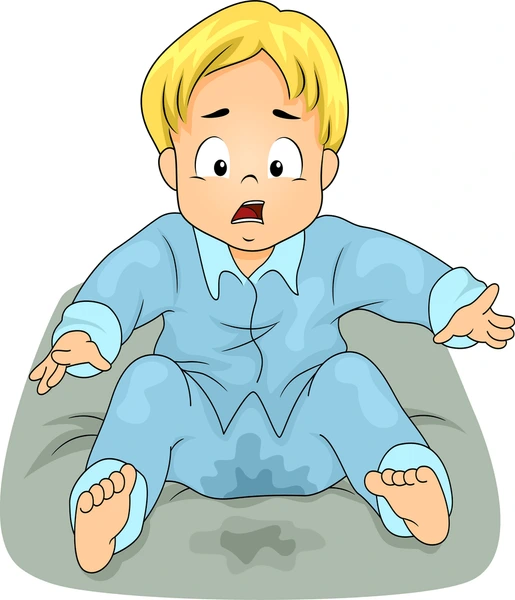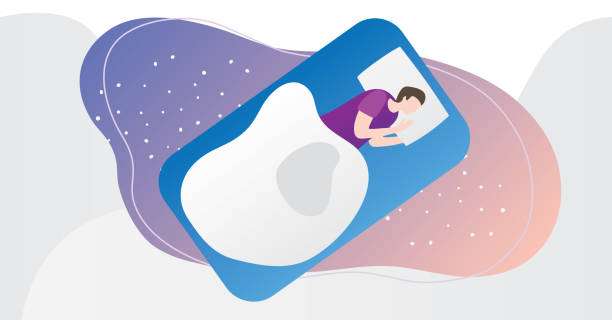Enuresis, commonly referred to as bed-wetting, affects numerous children and some adults, often leading to feelings of embarrassment and frustration. This blog serves as a detailed guide about parenting tips to understanding enuresis, including its causes, symptoms, and available treatments. We’ll also provide strategies for supporting children who experience bed-wetting and clarify some misconceptions about the condition. This information will be useful for parents, caregivers, and individuals experiencing enuresis, offering both insights and actionable advice.
Table of Contents
ToggleIf you or your child are experiencing symptoms of enuresis and need professional guidance, contact a psychologist today.

What is Enuresis?
Enuresis is the involuntary discharge of urine during sleep. It is most common in children under seven but can also occur in older children and adults. Enuresis is divided into two types:
Nocturnal Enuresis:
Predominantly occurring at night, this is the typical scenario referred to as bed-wetting.Diurnal Enuresis:
This less common form happens during daytime, often triggered by situations like intense play or an inaccessible bathroom.
Enuresis generally diminishes as children develop greater control over their bladder, although it may continue into older ages for some.


Causes of Enuresis
Multiple factors contribute to enuresis, ranging from genetic to psychological and environmental influences:
Genetic Factors:
Research suggests that A familial history of enuresis suggests a genetic component, where traits affecting bladder control are inherited.
Medical Issues:
Conditions that can lead to bed-wetting include:
- Urinary Tract Infections (UTIs): As per research, These infections can increase urination frequency and urgency.
- Diabetes: Elevated blood sugar levels may cause excessive urine production.
- Sleep Apnea: Disrupted sleep patterns from sleep apnea can heighten the risk of bed-wetting.
- Constipation: This might pressure the bladder and reduce its capacity, leading to involuntary urine discharge.
Psychological Aspects
: Emotional stress, such as adapting to new environments (new school, home) or family changes (arrival of a sibling), can induce enuresis. Moreover, children with anxiety or ADHD may have a higher incidence of bed-wetting.Developmental and Physical Growth
: Variations in the development of bladder control can mean some children achieve nighttime dryness later than their peers.
Lifestyle and Dietary Influences
Lifestyle choices and diet also play roles in enuresis:
Fluid Intake:
Drinking excessively or consuming caffeinated/sugary beverages before bedtime might increase bed-wetting risks.Sleeping Habits:
Children who are deep sleepers may not awaken in time to use the bathroom.Dietary Triggers:
Foods that irritate the bladder, like spicy or acidic items, could worsen bed-wetting.
If your child shows any of these symptoms and you’re concerned about bed-wetting, don’t hesitate to reach out to a psychologist for support.
Symptoms and Diagnosis
The primary symptom of enuresis is the involuntary release of urine, typically during sleep. However, there are several aspects to consider when identifying bed-wetting:
Frequency:
How often bed-wetting occurs, from rare to nightly episodes.Timing:
While typically nocturnal, daytime incidents may suggest different issues.Age Factor:
Persistent bed-wetting beyond age seven warrants further investigation.Associated Signs:
Symptoms like pain during urination can indicate a UTI or other relevant conditions.
When to Seek Medical Advice
It’s important to know when bed-wetting is a normal part of development and when it might indicate a more serious issue. Consider seeking medical advice if:
Persistence Beyond Age Seven:
If bed-wetting continues after the child’s seventh birthday.Additional Symptoms:
Occurrences of pain, excessive thirst, or altered urination patterns should prompt concern.Regression:
Concerns should arise if a child who has been dry at night starts wetting the bed again.Emotional and Social Impact:
Seek help if bed-wetting is affecting the child’s self-esteem or causing family distress.

Diagnostic Methods
When you consult a healthcare professional about bed-wetting, they will typically start with a thorough medical history and physical examination. The following diagnostic methods may be used:
Medical Review:
Inquiries about bed-wetting regularity, daytime symptoms, and family history of similar issues.Physical Examination:
A check for physical causes that may contribute to bed-wetting.Urine Analysis:
Tests to detect infections or conditions like diabetes.Bladder Function Assessment:
Occasionally, evaluations to test bladder efficiency are suggested.
By understanding the symptoms and diagnostic process, parents and caregivers can take the right steps toward effective treatment and support for children dealing with enuresis.
Treatment Options
There are several treatment options available for enuresis, ranging from behavioral interventions to medical treatments. The best approach often depends on the underlying cause and the individual needs of the child.
Behavioral Interventions
Behavioral Strategies
Moisture Alarms:
Devices that alert the child upon detecting wetness, aiding them in associating the need to urinate with waking.Bladder Training Exercises:
Methods to enhance bladder capacity and control, such as timed bathroom visits.Incentive Systems:
Using rewards for dry nights to reinforce progress.
Medical Interventions
Medications:
Options like desmopressin, which curtails nighttime urine production, or drugs to relax the bladder might be prescribed.Addressing Primary Conditions:
Effective management of any underlying conditions can alleviate bed-wetting.
Lifestyle Adjustments and Remedial Actions
Fluid Timing:
Encourage increased fluid intake earlier in the day and reduce it closer to bedtime. Avoid caffeine and sugars before sleep.Routine Bathroom Visits:
Make regular bathroom use a habit throughout the day and especially before bedtime.Optimal Sleep Environment:
Create a comforting sleep area with easy bathroom access and use protective bedding to ease maintenance.
Role of Therapy and Counseling
For some children, bed-wetting can be linked to emotional or psychological factors. In these cases, therapy or counseling can be beneficial:
Cognitive Behavioral Therapy (CBT):
This can help manage any related anxiety or stress.Family Therapy:
Addressing broader family interactions that might influence the child’s condition.
For tailored advice and strategies, consulting a psychologist could provide direction tailored to your child’s needs.
If you’re exploring treatment options and need personalised advice, contact a psychologist today to discuss the best approach for your child.
Supporting a Child with Enuresis
Emotional and Practical Support
Understanding and Patience:
Assure your child that bed-wetting is a common, manageable condition. Avoid negative reactions which could increase their distress.Positive Reinforcement:
Acknowledge progress with praise or small tokens of appreciation.Maintain a Supportive Approach:
Handle incidents calmly to protect your child’s self-esteem.
Communication Tips
Normalize Discussions:
Explain that many children go through similar challenges.Encourage Openness:
Let your child express any worries, reassuring them of your support.Collaborative Problem Solving:
Involve your child in discussing and choosing treatment options.
Tips for Caregivers
Protective Bedding:
Use protective covers for easier cleanup.Consistent Bedtime Routine:
Establish and stick to a nightly routine, including a last-minute bathroom visit.Ensure Nighttime Accessibility:
Keep the pathway to the bathroom clear and illuminated.

Prevention and Management Strategies
Tips for Preventing Bed-Wetting
While not all cases of bed-wetting can be prevented, certain strategies can reduce the likelihood of occurrences:
Limit Fluids Before Bed:
Cut back on drinking fluids in the evening, particularly caffeinated or sugary beverages, to minimize nighttime urination.
Encourage Regular Toilet Use:
Promote consistent bathroom use throughout the day and ensure your child goes right before bedtime.
Nutrition Matters:
Avoid foods that may irritate the bladder, such as those that are spicy or acidic, to lessen bed-wetting episodes.
Long-Term Management Strategies
For children who continue to experience enuresis, long-term management strategies can help:
Establish a Routine:
Keep a fixed schedule for meals, fluid intake, and bathroom breaks to help regulate bladder activity.
Track Incidents:
Maintain a log of bed-wetting instances to detect trends and measure improvements, which can be valuable during medical consultations.
Maintain Encouragement:
Emphasize slow and steady progress instead of instant solutions to keep morale high.
Importance of a Supportive Environment
Creating a supportive home environment is essential for helping your child manage and overcome enuresis:
Involve the Family:
Make sure everyone in the household supports the child’s efforts in managing bed-wetting.
Inform Siblings:
Teach siblings about enuresis to prevent ridicule and encourage empathy.
Explore Support Networks:
Join groups where families dealing with similar issues exchange insights and support.
Myths and Misconceptions
There are many myths and misconceptions surrounding enuresis that can contribute to misunderstandings and stigma. Here are some common myths debunked:
- Myth: Bed-wetting is due to laziness or inadequate parenting.
- Reality: Enuresis is typically beyond a child’s control and linked to physiological factors, not parental effort or child’s attitude.
- Myth: Only small children experience bed-wetting.
- Reality: Enuresis can occur in older children, adolescents, and adults, often influenced by various underlying conditions.
- Myth: Bed-wetting can be controlled with enough effort.
- Reality: This condition is involuntary and complex, not merely a matter of willpower.
- Myth: Excessive water consumption is the sole cause of bed-wetting.
- Reality: Multiple factors, including bladder capacity and genetic predisposition, play roles in enuresis.
Conclusion
Understanding enuresis is vital for effective management and support. Recognizing the broad range of influences—from genetic to lifestyle—enables better care and assistance. Emotional support, clear communication, and practical interventions are key in helping children navigate bed-wetting. Through behavioral strategies, medical approaches, and lifestyle changes, it’s possible to alleviate the impacts of this condition and improve quality of life. Encouraging a supportive community environment is also fundamental to boosting a child’s confidence and coping abilities.
